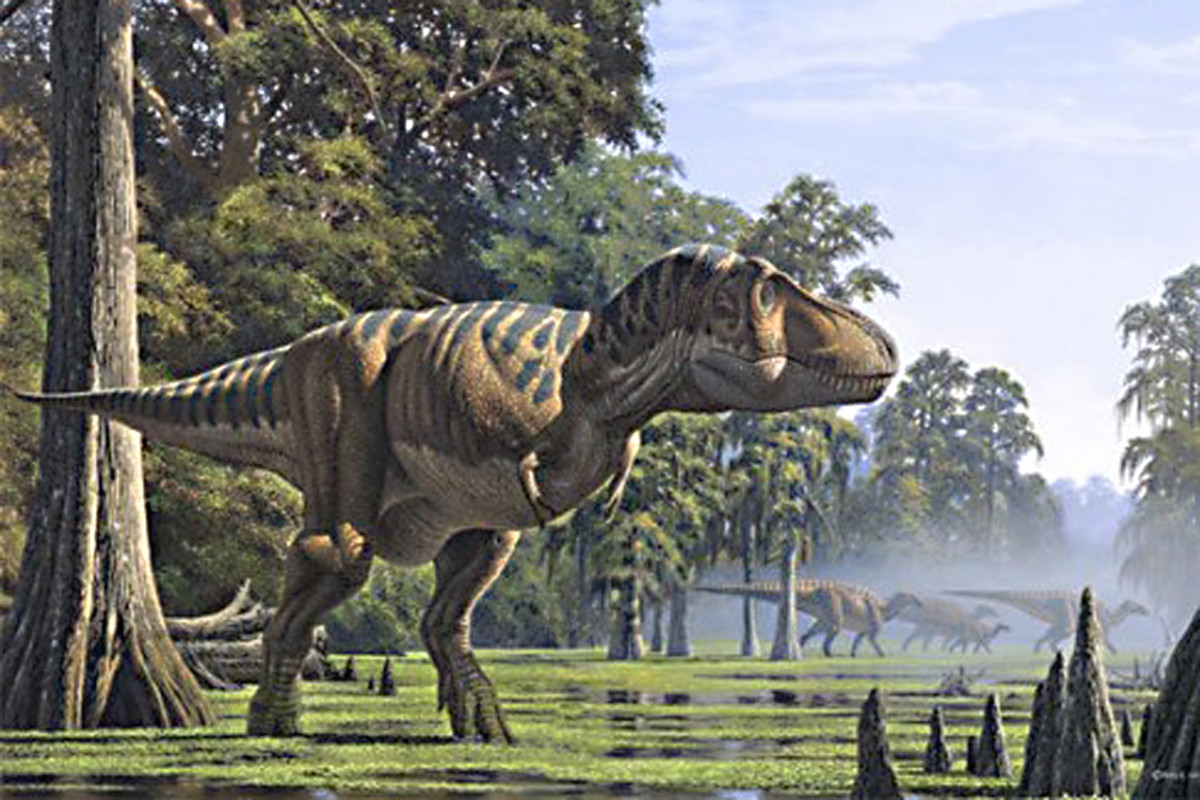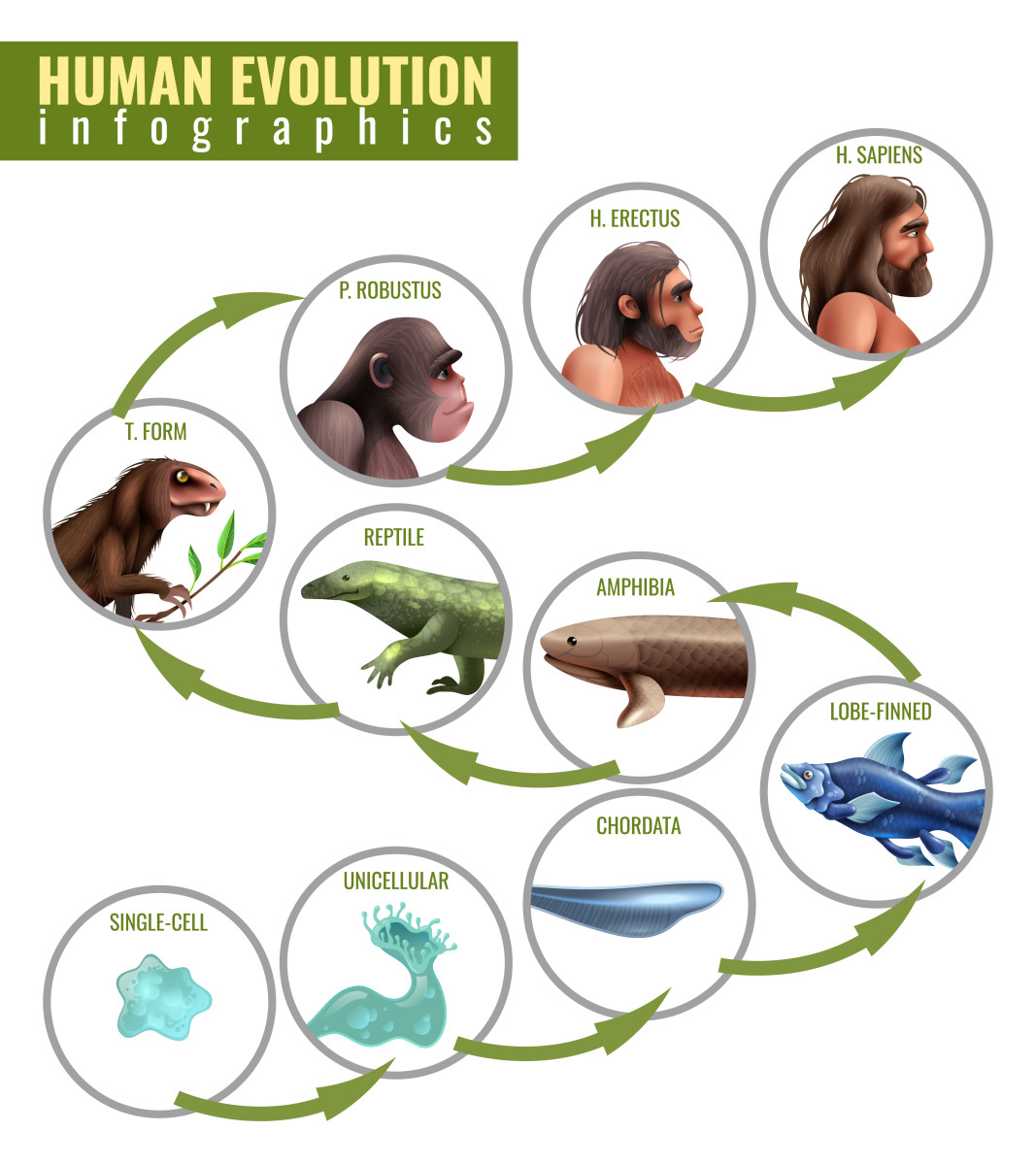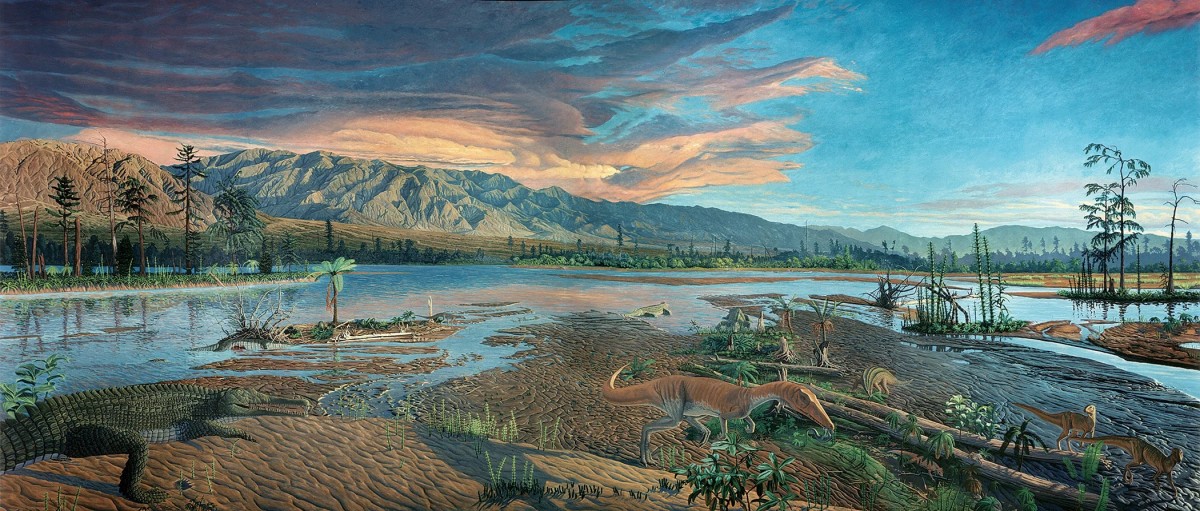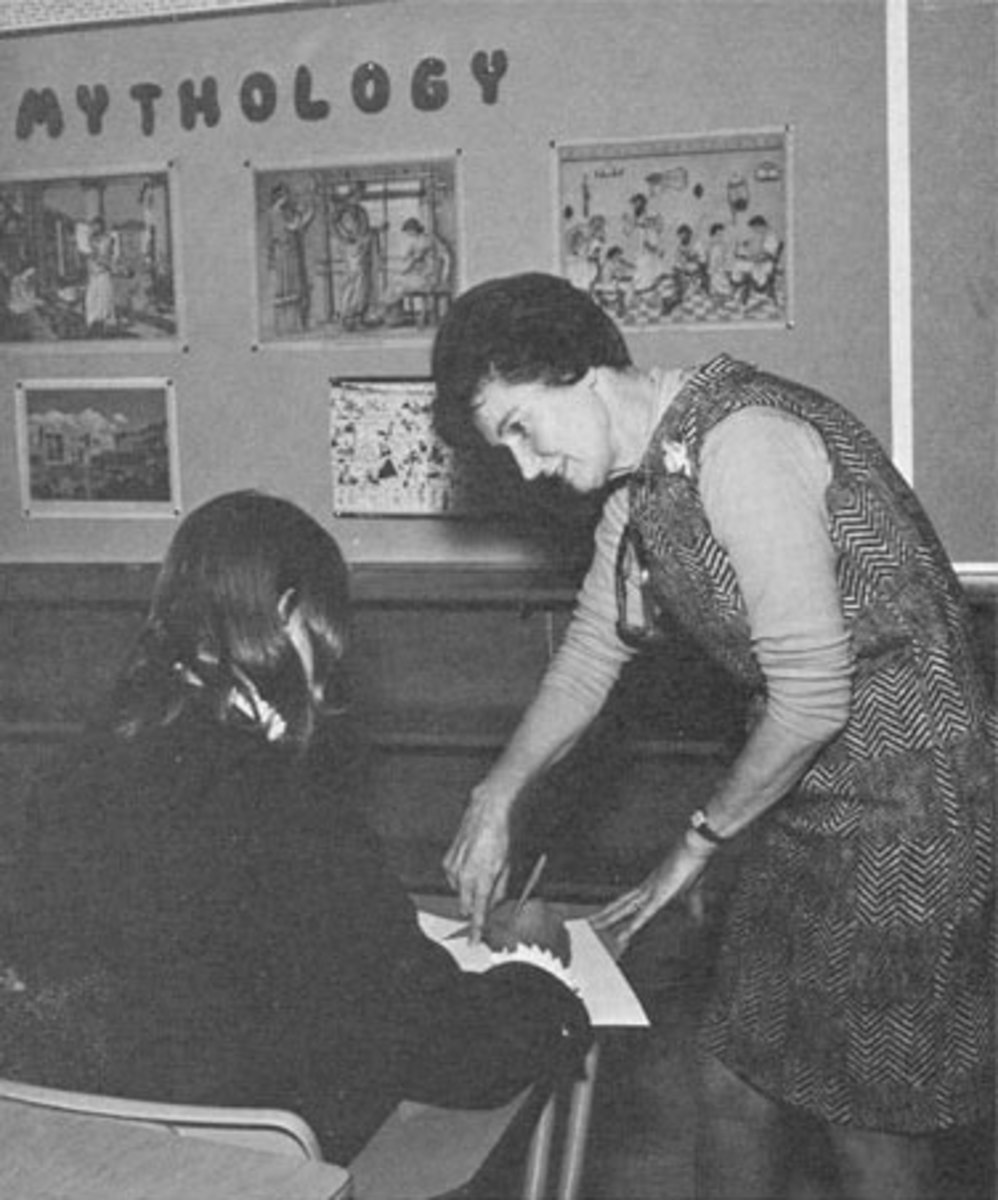- HubPages»
- Books, Literature, and Writing»
- Commercial & Creative Writing»
- Word Usage & Grammar
Dimetrodons From 280 Million Years Ago Part of God's Creation, According to Book by Bob Balch
D Don Lives!

Religion and Dinosaurs Do Mix, According to Attorney-Author
The existence of creatures like Dimetrodons 280 million years ago are consistent with Biblical teachings, according to author Bob Balch, who is also an attorney and a CPA. Balch recently wrote "D-Don Lives". The fascinating book may have created a new genre which defies traditional literary definitions.
"We don't know how long God has been working on earth," the North Texas resident said recently. "The fact some dinosaurs are estimated to have roamed this world 65 million years ago and D-Dons 280 million years ago do not contradict the Bible."
Balch, who is a Renaissance man, with far-ranging interests, further said, "The book of Job talks about creatures named Behemoth and Leviathan. Everything is possible with God."
He also said the Bible refers to a "void on the face of the deep."
This genre-bending book begins with a fascinating nonfiction description of the history of dinosaurs and their predecessors the Dimetrodons. The last part of the book morphs into a work of fiction equally interesting.
Fate of Dinosaurs and Dimetrodons Intrigue People of All Ages
Balch begins his dedication with the words, "People of all ages love dinosaurs. Their disappearance from the earth long ago has long captivated scientists and scholars alike. Skeletal remains taken from digs all over the world have fascinated mankind since they first began to find their remains and piece them back together for exhibiting in museums and educating the public. But long before dinosaurs appeared on the scene and roamed the earth a mere 67 million years ago, including the feared Tyrannosaurus Rex, a life form developed during the Permian period some 287 millions ago."
He further writes, "The transition of early amphibians to reptiles to synapsids tells the story of the development of a transitional species described as mammal like reptiles such as Dimetrodon and Edaphosaurus. This book tells their story."
The Permian Bone Bed
Remains of dimetrodons and other per-dinosaur creatures have been discovered in red clay deposits dating to the Permian period of the earth's history. Three areas on the globe today contain these deposits including the Ural Mountains in Russia, China and in southwestern parts of the United States including Texas and Oklahoma
Balch writes the term "Permian" was coined by Sir R.I. Murchison in 1841 who was serving as president of the Geological Society of London. He discovered a typical strata in extensive Russian explorations in the Perm Kai of Russia near the town of Perm. He named it after the ancient kingdom of Permia.
The famous Permian period is a geologic period and system which extended from almost 300 million to 250 million years ago. During this period, the earth contained one single super continent named Pangaea. The Permian period ended with the largest mass extinction in the earth's history. Seventy per cent of terrestrial species died out while 90% of the marine species perished.
Life wouldn't recover until well into the Triassic Period.
Dramatic Paleontological Discovery In Texas In 2014
It was early 2014 when paleontologist Chris Flis discovered a large dimetrodon in Baylor County, North Texas. Flis is curator of the Whiteside Museum of Natural History. He found the skeleton eroding out of a hillside. Flis said, "The body of the dimetrodon seems to have floated down a stream and was buried in the coarse pebbles and sand."
He further explained that "after the body decomposes, the bones come apart, and when a flood occurs, the parts are transported before finally being deposited permanently." The pieces of the dimetrodon are in the process of being pieced together at the museum in Seymour, Texas.
Whiteside Museum Opened Doors in 2014
The Whiteside Museum of Natural History opened on June 7, 2014. World-renowned paleontologist Dr. Robert Bakker presented a lecture to a crowd estimated to be above 1,000 on the historic day. The museum is named after Judge Clyde Whiteside, a well-known district judge in North Texas and Central Texas. Whiteside has been a major supporter of the museum.
Flis operates an active lab on site, where visitors can interact in the process of identifying bones taken from the Craddock and George dig sites. The dimetrodon discovered by Flis was found on the George Place, property owned by Ken George.
It is also near the Craddock Ranch, now owned by Bill Whitley.
Although relatively new, the museum is already gaining widespread support. A new T-Rex exhibit created by Keith Strasser is now on exhibit.
Balch writes, "None of this would have been possible without the vision and financial backing of Judge Clyde Emerson Whiteside. He wanted to give back to his hometown in ways that would have a lasting effect for generations to come."
Balch Uses Legal Background
Balch employs his legal background when the book morphs from fact to fiction. One of the characters he creates to steal three Dimetrodons from the Whiteside Museum buys an island off Costa Rica. Because of the legal ramifications Balch writes about, the thief is outside the jurisdiction of both the United States and Costa Rica. He cannot be extradited back to the United States or Costa Rica because of the unique legal framework which unfolds in the novel. One should read the novel to find out how or if the legal system figures out a way to bring the thief and the Dimetrodons back to the Whiteside Museum in Texas.
Jurassic Park Takeoff
Balch said, "Part of the book is a Jurassic Park takeoff. Hopefully, anyone interested in that movie will also be interested in the book. Adults are all children at heart, and everyone is interested in dinosaurs and what happened to them."
This is Balch's eighth book. He has written each of the books while operating a law office in Wichita Falls, Texas. Also a CPA, he has a lot of experience in estates and probate work in addition to taxes. He has two sons who are both doctors and wife Debbie. He also has a lot of knowledge about paleontology, as this book proves.
God's Creatures
In the final chapter of his book which he entitles "God's Creatures", Balch wrote, "In the Genesis of the Bible, God spoke and created all living things. In the book Job, chapters 40 and 41, two unknown beasts are named. They are Behemoth and Leviathan. As you read through the descriptions of these beasts, you can almost visualize a d-don or dragon like creature or dinosaur or something coming out of the waters of the deep to the earth's dry land. This is to make the point with Job that everything is possible with God."
Missing Link Between Amphibians and Reptiles
The most famous specimens discovered in the bone bed are of a two-foot long creature named Seymouria Baylorensis, meaning Baylor County Seymour one, according to Balch. First found in 1882 by Charles H. Sternberg, it is considered by some to be the missing link between amphibians an reptiles.
Current Excavation Reveals Edaphosaurs
A recent update from the dig site reveals a partial edaphos skeleton has been discovered. Edaphors have a fin like Dimetrodon, but in addition have prongs that protrude outward like branches on a tree. This creature lived 287 million years ago and stood five feet, nine inches tall.
Glimpse of the story of the prehistoric creatures on the back of the book
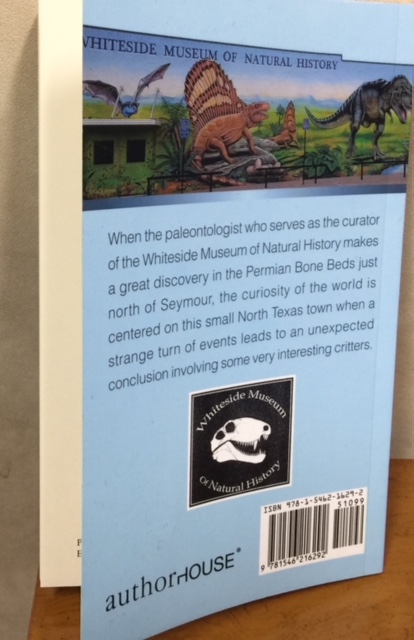
Paleontologist Edward Drinker Cope Discovered Rare Species in North Texas
Edward Drinker Cope arrived in the North Texas area in 1877 and opened up the American West to many discoveries. A Quaker from Philadelphia, he was educated as a paleontologist and comparative anatomist. His early work not only made him famous, but also found skeletons which show the transition of early amphibians to reptiles to synapsids.
Balch, who serves on the board of the Whiteside Museum of Natural History, said one of the reasons he wrote the book was to disclose to people there is a major paleontologist field here in North Texas which is still leading to major discoveries about prehistoric creatures which once roamed this area.


